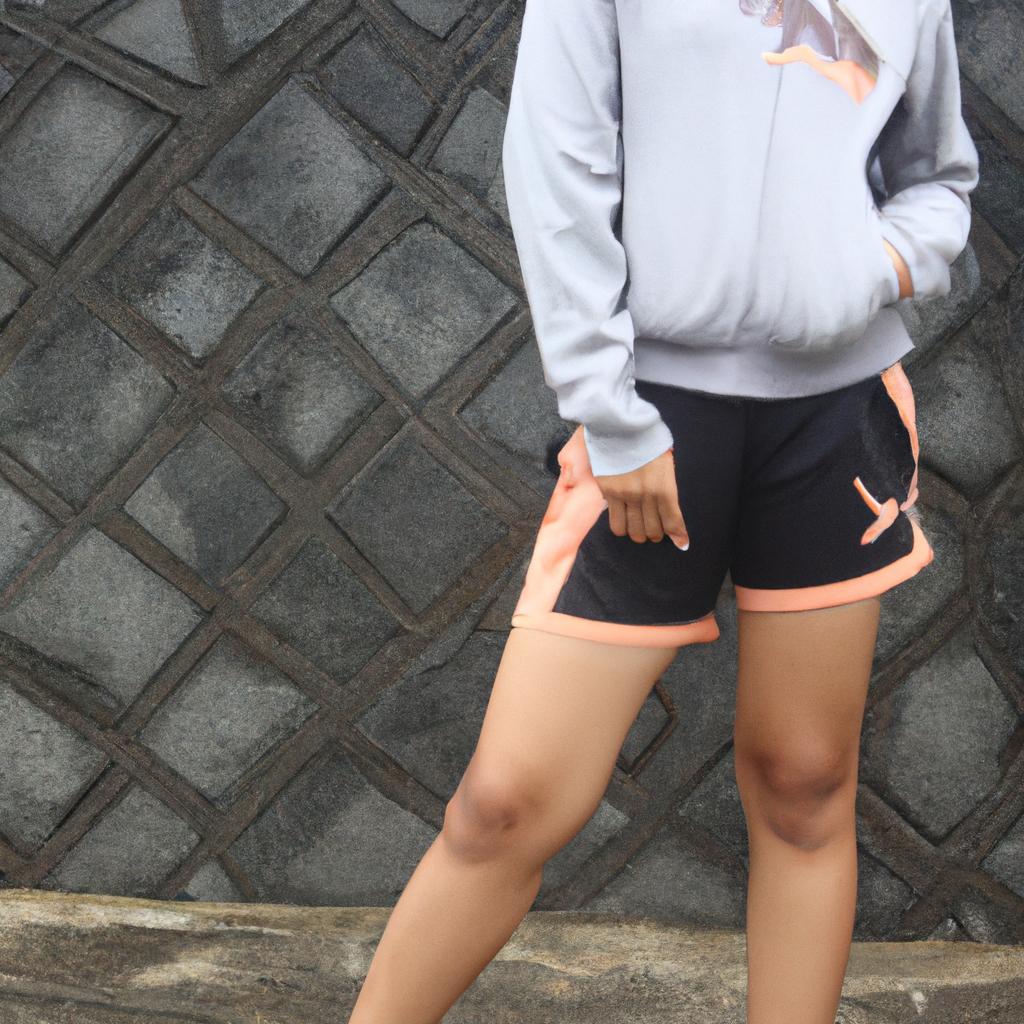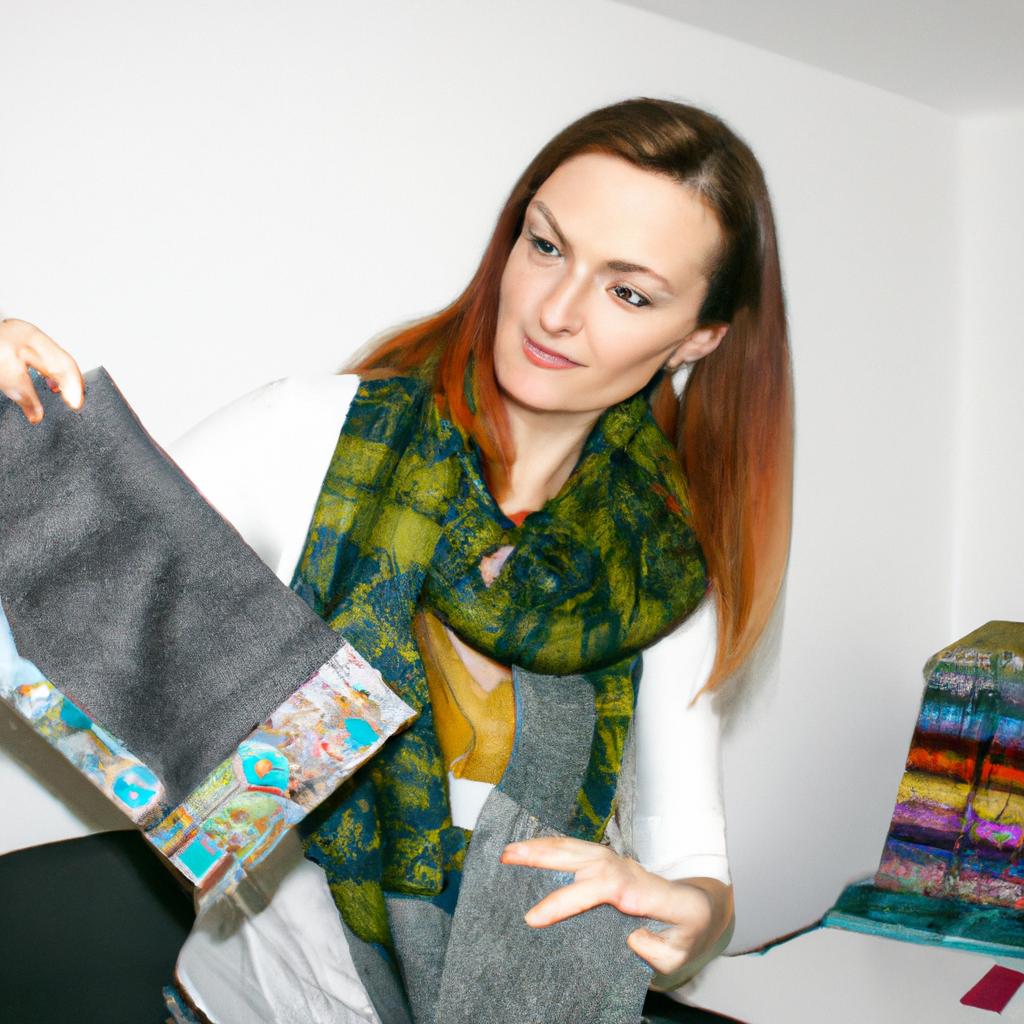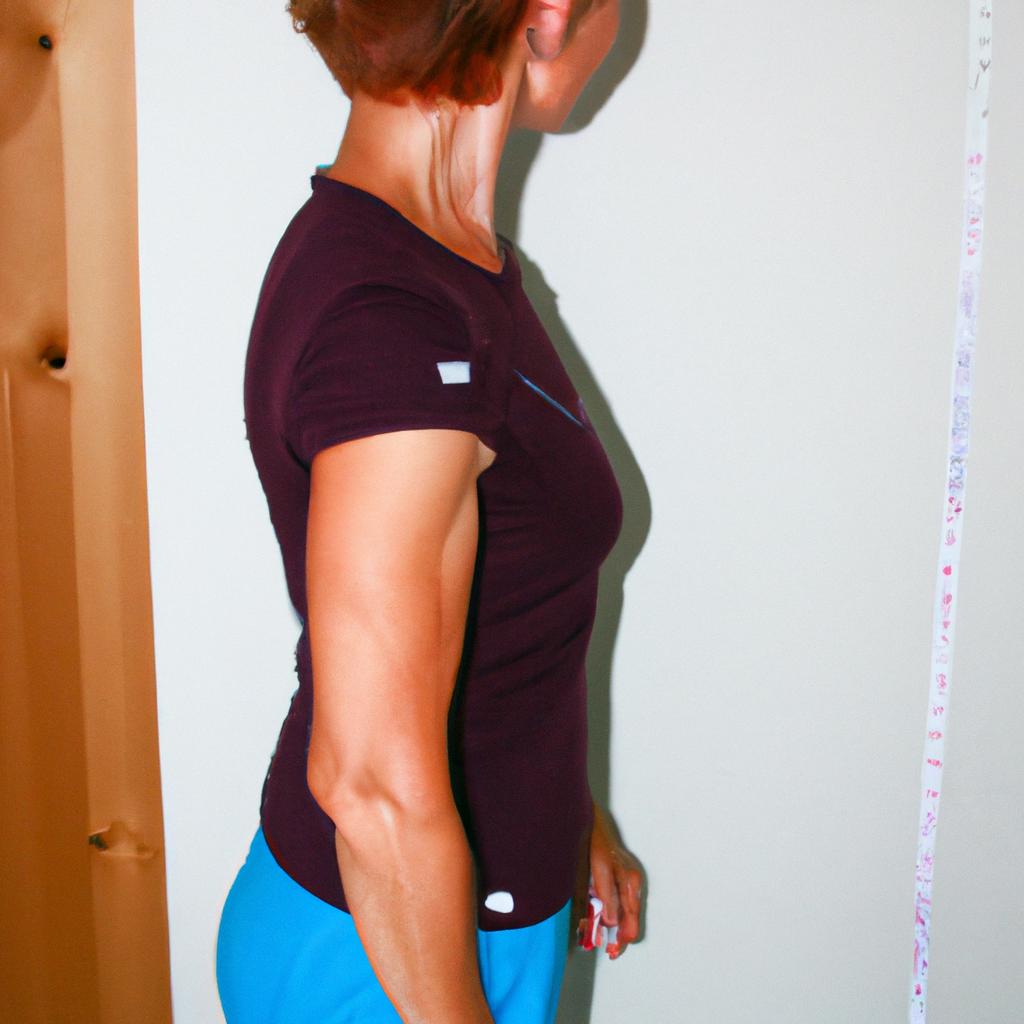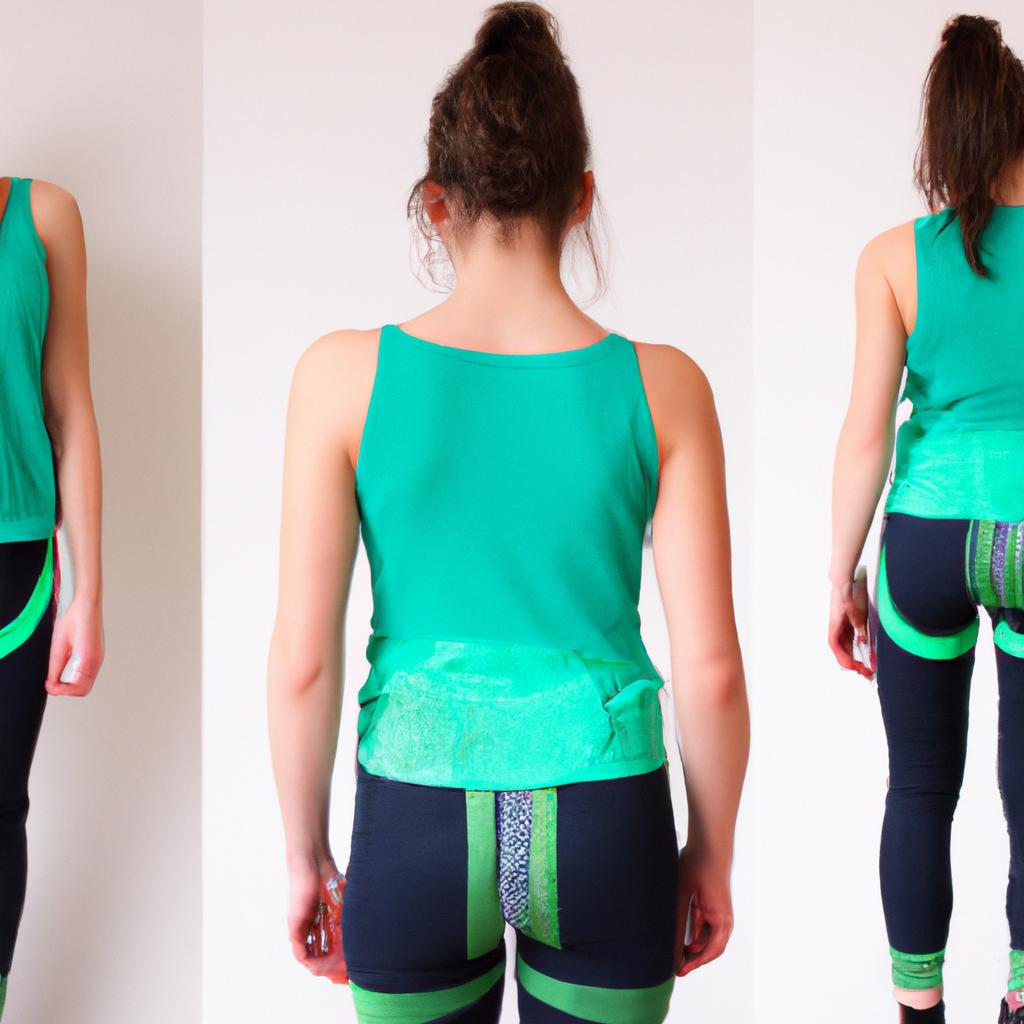Care Instructions for Women’s Active Wear: Essential Tips for Longevity and Performance

Active wear has become an integral part of many women’s wardrobes, providing comfort and flexibility for various physical activities. However, to ensure the longevity and optimal performance of these garments, proper care is essential. For instance, imagine a fitness enthusiast who invests in high-quality athletic leggings but fails to follow appropriate care instructions. Over time, the fabric loses its elasticity, becomes less breathable, and ultimately compromises both comfort and performance. This article aims to provide essential tips for caring for women’s active wear, with an emphasis on maintaining durability and preserving functionality.
In order to understand how best to care for women’s active wear, it is crucial to familiarize oneself with the materials commonly used in manufacturing these garments. Many brands utilize moisture-wicking fabrics such as nylon or polyester blends that help regulate body temperature by drawing sweat away from the skin. Additionally, spandex or elastane is often incorporated into the design to provide stretch and support during physical activity. These materials require specific cleaning techniques to prevent damage while maintaining their functional properties. Therefore, this article will delve into practical suggestions regarding washing methods, drying techniques, and storage practices that can significantly extend the lifespan of women’s active wear.
Furthermore, understanding the potential risks associated with improper care of active wear is Furthermore, understanding the potential risks associated with improper care of active wear is crucial. Failing to follow appropriate care instructions can lead to several negative consequences. Firstly, using harsh detergents or fabric softeners can cause the breakdown of moisture-wicking properties, resulting in less effective sweat absorption and increased odor retention. Secondly, washing active wear with rough fabrics such as towels or jeans can cause pilling or snagging, compromising both the appearance and performance of the garment. Lastly, excessive heat exposure during drying can weaken the elasticity of spandex or elastane fibers, leading to sagging or stretching out over time.
To ensure the longevity and optimal performance of women’s active wear, it is recommended to follow these essential care tips:
-
Read and follow the care label instructions: Each garment comes with specific care guidelines provided by the manufacturer. It is important to read these instructions carefully and adhere to them for proper care.
-
Use a gentle detergent: Opt for a mild detergent specifically formulated for activewear or choose a gentle liquid detergent without additives like bleach or fabric softener. Harsh detergents can damage the fabric and compromise its functional properties.
-
Wash in cold water: Cold water helps preserve color vibrancy and prevents shrinkage. Additionally, it minimizes the risk of damaging delicate fibers like spandex or elastane.
-
Turn garments inside out: Turning active wear inside out before washing helps protect delicate seams and prints from rubbing against other items in the wash.
-
Avoid mixing with rough fabrics: Washing active wear separately from rough fabrics like towels or jeans reduces friction that can lead to pilling or snagging.
-
Air dry whenever possible: Heat can be detrimental to activewear fabric, so it is best to air dry whenever possible. Hang garments on a clothesline or lay them flat on a clean towel away from direct sunlight.
-
If using a dryer, use low heat setting: If air drying is not feasible, tumble dry on low heat. Avoid high heat as it can damage the elasticity of spandex or elastane fibers.
-
Store properly: Fold activewear neatly and store in a cool, dry place away from direct sunlight. Avoid hanging them for extended periods, as this can cause stretching and deformation of the fabric.
By following these care tips, women can extend the lifespan of their active wear, ensuring that they continue to provide comfort, support, and functionality during physical activities.
Properly sort and separate different types of fabrics before washing
Properly sorting and separating different types of fabrics before washing is a crucial step in maintaining the longevity and performance of women’s active wear. By taking the time to organize your laundry based on fabric type, you can ensure that each garment receives the appropriate care it needs during the washing process.
For instance, imagine a scenario where you have recently purchased a new pair of leggings made from moisture-wicking polyester fabric. You also own a sports bra made from delicate nylon material. Without proper separation, these two items could be washed together, resulting in potential damage or discoloration to either piece. By following the recommended sorting guidelines, however, such mishaps can easily be avoided.
- Group similar fabrics together: Start by segregating your garments into categories based on their fabric composition. This will prevent any color bleeding or transfer between materials.
- Pay attention to care labels: Read and adhere to the instructions provided on each individual clothing item. These labels often provide specific guidance for wash temperature and cycle settings.
- Consider garment fragility: Separate more delicate pieces like bras or compression gear from rougher textiles like towels or jeans. This precautionary measure prevents unnecessary friction that may lead to pilling or tearing.
- Treat heavily soiled clothes separately: If certain garments require pre-treatment due to stains or dirt accumulation, set them aside for special treatment before including them in regular loads.
Additionally, incorporating a table with three columns (Fabric Type, Care Instructions) and four rows detailing examples of various fabrics commonly found in women’s activewear alongside their corresponding care instructions can further assist in visually understanding how important it is to sort accordingly.
In summary, properly sorting and separating different types of fabrics before washing plays an essential role in preserving the quality and performance of women’s active wear. Through careful organization according to fabric type, adherence to care labels, consideration of garment fragility, and separation of heavily soiled clothes, you can ensure that each item is treated with the appropriate care it deserves. This sets the stage for the subsequent section on washing in cold water to preserve color and elasticity without explicitly stating a transition into the next step.
Wash in cold water to preserve the color and elasticity of the garments
Transitioning smoothly from the previous section, let’s delve into another crucial aspect of caring for your women’s active wear. By following these recommendations, you will ensure that your garments maintain their performance capabilities, longevity, and overall quality.
To illustrate the significance of this topic, consider a hypothetical scenario where two individuals own identical pairs of leggings made from moisture-wicking fabric. The first person washes her leggings according to our care instructions, while the second one neglects them by ignoring essential practices. After several months, it becomes evident that the first individual’s leggings still possess their original color vibrancy and elasticity, whereas those owned by the second individual have faded significantly and lost their shape due to improper care.
When laundering your women’s active wear, keep in mind the following key points:
- Use mild detergents: Opt for gentle detergents specifically designed for activewear as they are formulated to remove sweat, dirt, and odor without compromising fabric integrity.
- Avoid harsh chemicals: Steer clear of bleach or any other strong chemical agents that can cause discoloration or damage fibers over time.
- Turn garments inside out: This practice helps protect delicate stitching and prevents excessive friction between fabrics during washing cycles.
- Wash separately from other clothing items: Isolating your active wear ensures that potential abrasive contact with zippers, buttons, or rougher materials is minimized.
By adhering to these guidelines consistently, you’ll enhance not only the appearance but also the functionality of your women’s active wear collection.
| Washing Recommendation | Effect on Garments |
|---|---|
| Use cold water | Preserves color |
| Gentle cycle | Protects elasticity and shape |
| Avoid excessive agitation | Reduces pilling and wear |
By incorporating these suggestions into your laundry routine, you will effectively extend the lifespan of your women’s active wear. Consequently, you can continue to enjoy superior performance during workouts while maintaining their aesthetic appeal.
Transitioning seamlessly to the subsequent section on fabric softeners: it is essential to note that employing these products may inadvertently weaken the moisture-wicking properties of your activewear. Let us explore this topic further for a comprehensive understanding of how best to care for your garments without compromising their functionality.
Avoid using fabric softeners as they can weaken the moisture-wicking properties
Preserve the Fabric’s Quality and Durability
To ensure that your women’s active wear remains in optimal condition, proper care is essential. Following the correct washing techniques can help preserve the color, elasticity, and overall performance of your garments. For example, imagine you have just completed an intense workout wearing your favorite pair of leggings. You are concerned about maintaining their quality and want to extend their lifespan.
One effective way to care for your activewear is by avoiding the use of fabric softeners. While they may make clothes feel softer, these products can actually weaken the moisture-wicking properties—the ability of fabrics to draw sweat away from the body—of your active wear. The chemical compounds present in most fabric softeners tend to create a coating on clothing fibers that impairs their breathability and moisture management capabilities.
To further enhance the longevity of your women’s active wear, consider incorporating the following practices into your laundry routine:
- Turn garments inside out before washing: This step helps protect any printed designs or logos from fading or peeling.
- Use mild detergents: Opt for gentle detergents specifically formulated for activewear. These types of detergents are designed to effectively clean without damaging technical fabrics.
- Wash with similar colors: To prevent dye transfer and maintain vibrant colors, it is advisable to wash like-colored items together.
- Avoid excessive agitation: Overly vigorous washing cycles can cause unnecessary stress on delicate fabrics. Select a gentle cycle setting whenever possible.
By implementing these simple yet effective care instructions into your routine, you will be able to prolong the life span of your women’s active wear while maximizing its functionality and performance.
Moving forward, let us explore another crucial aspect of caring for your garments: air drying or tumble drying on low heat to prevent shrinkage and damage
Air dry or tumble dry on low heat to prevent shrinkage and damage
Having discussed the importance of avoiding fabric softeners and using appropriate drying methods, it is now crucial to delve into proper cleaning techniques that will help maintain the longevity and performance of women’s active wear. To illustrate this further, let us consider a hypothetical scenario where Emma, an avid runner, regularly uses her moisture-wicking leggings without following recommended cleaning guidelines.
Regularly cleaning your activewear not only removes dirt and sweat but also prevents odor buildup and maintains its functionality. Here are some essential tips for effectively cleansing your garments:
-
Pre-Treat Stains: Before tossing your active wear into the washing machine, pre-treating stains can significantly improve their chances of being completely removed. For instance, if Emma spills coffee on her leggings during a morning run, she should promptly blot the stain with cold water or use a mild detergent specifically designed for removing tough stains.
-
Follow Care Label Instructions: Each piece of clothing comes with care label instructions indicating the specific requirements for laundering. It is vital to carefully read these labels before starting any cleaning process. In Emma’s case, adhering to the manufacturer’s instructions would involve using cold water and selecting a gentle cycle when washing her moisture-wicking leggings.
-
Use Mild Detergents: Opt for mild detergents that do not contain harsh chemicals or additives such as bleach or fabric softeners. These substances can compromise the integrity of the fabric over time and diminish their moisture-wicking properties. Choosing a detergent designed for sportswear ensures effective yet gentle cleansing.
-
Avoid Overloading: When loading your washer, be mindful not to overcrowd it with too many garments at once. This allows each item enough space to move freely in order to receive optimal cleaning results while preventing unnecessary friction that may lead to pilling or damage.
To emphasize the significance of maintaining proper cleanliness practices, consider the following table highlighting the benefits of regular cleaning and care:
| Benefits of Regular Cleaning |
|---|
| Helps remove sweat and dirt |
| Prevents odor buildup |
| Maintains fabric integrity |
| Preserves moisture-wicking properties |
In summary, by pre-treating stains, following care label instructions, using mild detergents, and avoiding overloading your washer, you can ensure that your women’s active wear remains in optimal condition for an extended period. The next section will focus on storing these garments properly to prevent mold and mildew growth.
To safeguard against potential damage caused by improper storage, it is essential to store your women’s activewear in a clean and dry place.
Store in a clean and dry place to prevent mold and mildew growth
In order to further extend the longevity and performance of your women’s active wear, it is essential to store them properly. By following these storage guidelines, you can prevent mold and mildew growth, maintain fabric integrity, and ensure that your garments are ready for your next workout session.
Example Case Study:
Imagine a scenario where Sarah has just finished her intense fitness routine at the gym. She comes home drenched in sweat and tosses her sweaty activewear into a pile on the floor. Days later, when she finally decides to wash them, she discovers an unpleasant odor emanating from her clothes due to improper storage practices.
Proper storage involves taking certain precautions to protect your active wear from potential damage or deterioration:
- Cleanliness: Ensure that all clothing items are thoroughly cleaned before storing them. Lingering dirt or sweat can attract bacteria and cause odors over time.
- Ventilation: Choose a clean and dry place with adequate airflow for storing your garments. Avoid damp or humid environments as they promote mold and mildew growth.
- Separation: Keep different types of fabrics separate when storing them together. This prevents friction between materials that could lead to premature wear and tear.
- Folding Techniques: Fold your garments neatly instead of crumpling them up haphazardly. This helps maintain their shape while maximizing space efficiency in your storage area.
To illustrate the significance of proper storage methods visually, consider the table below showcasing how different aspects impact garment quality:
| Aspect | Effect |
|---|---|
| Damp Environment | Mold & Mildew Growth |
| Direct Sunlight | Fading & Color Distortion |
| Compression | Loss of Elasticity |
| Inadequate Space | Wrinkling & Crease Formation |
By adhering to these storage guidelines and considering the effects of various aspects on garment quality, you can ensure that your women’s active wear remains in excellent condition for a prolonged period.
To ensure optimal care for your women’s active wear, it is essential to follow the manufacturer’s instructions for specific care requirements. These instructions provide valuable insights into maintaining the performance and longevity of your garments without compromising their fabric integrity or functional properties.
Follow the manufacturer’s instructions for specific care requirements
Transitioning smoothly from the previous section on storing active wear, it is crucial to adopt proper washing techniques to maintain the longevity and performance of your women’s activewear. Let us explore some essential tips for effective cleaning:
To exemplify the significance of appropriate washing methods, consider a case where an individual consistently neglects to follow these guidelines. Over time, their high-performance leggings may lose their stretchiness and become less comfortable during workouts due to the accumulation of sweat, oils, and dirt. By implementing the following practices, you can avoid such issues while enhancing the durability and functionality of your activewear:
-
Always separate colors: Sort your activewear into different loads based on color groups (e.g., whites, darks, brights) before initiating any wash cycle. This precautionary step prevents color bleeding or transfer between garments.
-
Use cold water: When laundering your activewear, opt for cold water instead of warm or hot water settings. Cold water helps preserve fabric elasticity and minimizes shrinkage risks.
-
Avoid harsh detergents: Choose mild detergents specifically formulated for delicate fabrics like spandex or Lycra blends commonly found in activewear. These gentle alternatives effectively remove stains without compromising garment integrity.
-
Skip fabric softeners: While fabric softeners provide a pleasant scent and a soft feel to clothing items, they tend to leave residue on technical fabrics that interfere with moisture-wicking properties. Consequently, omitting fabric softeners maintains optimal breathability in your active apparel.
To further emphasize the impact of correct washing procedures visually, let us examine the table below showcasing a comparison between improper care versus recommended practices:
| Improper Care | Recommended Practices |
|---|---|
| Hot water | Cold water |
| Regular detergent | Mild detergent |
| Mixed colors | Separate by color |
| Fabric softeners | Exclude fabric softeners |
By implementing these effective washing techniques, you can ensure that your women’s activewear remains in peak condition, both aesthetically and functionally. Proper care not only enhances the longevity of your garments but also maintains their performance capabilities, enabling you to exercise comfortably and confidently.
Incorporating these essential tips into your washing routine will help extend the lifespan of your active wear while ensuring optimal performance during workouts. Take pride in caring for your activewear as it supports you throughout your fitness journey.






